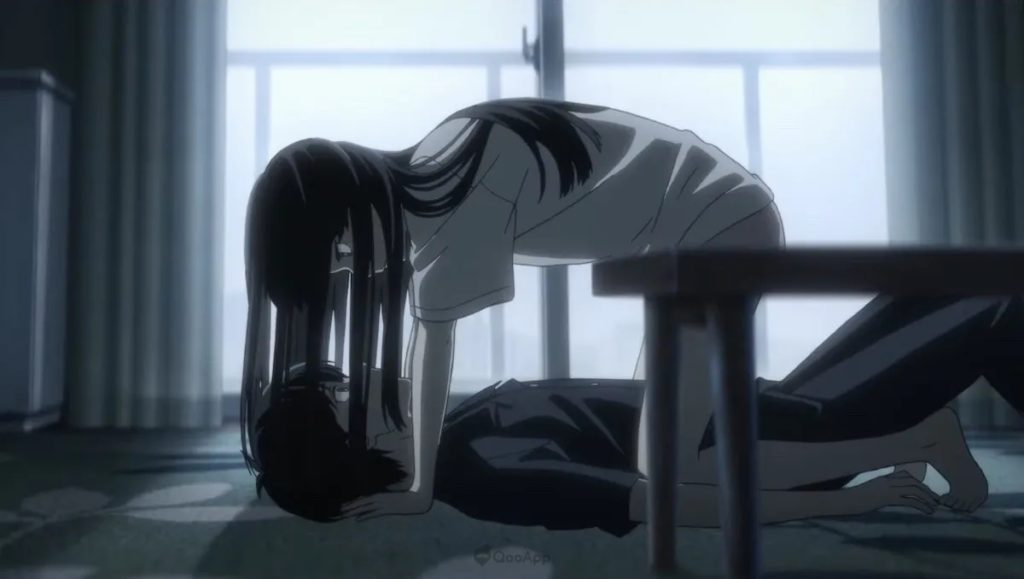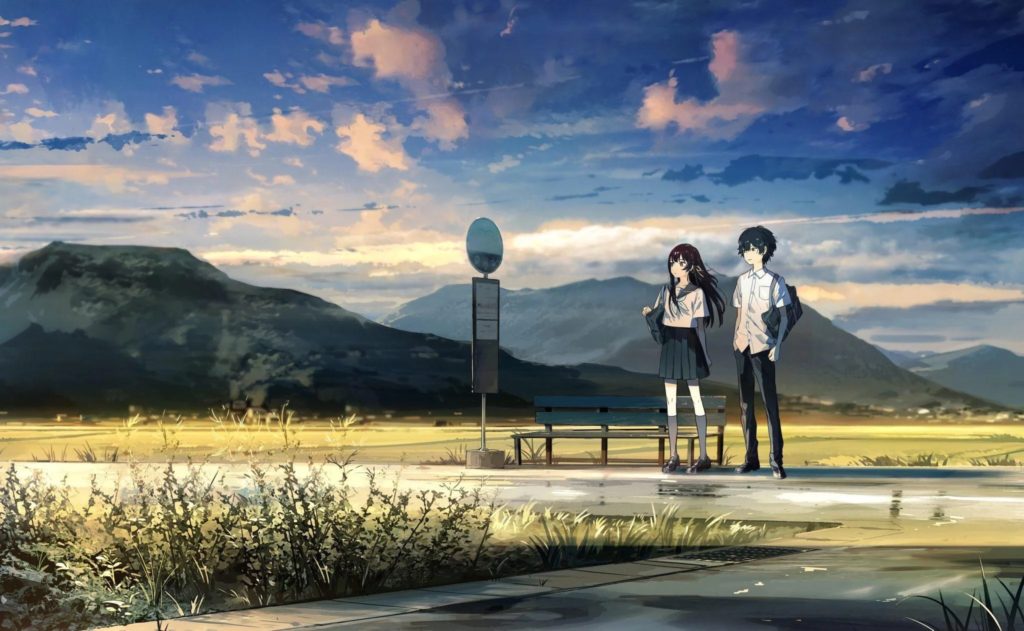Tunnel to Summer
October 13, 2022 · 0 comments
By Shelley Pallis.

Kaoru Tono hates the summer. He hates the heat, and the way that the ice creams always sell out in the tuck shop, and the fact that nobody at school has anything to do or say. He hates it when the train up ahead hits a deer on the line, because it means he has to stand around in sweltering temperatures even at half past eight in the morning. And he hates his life, because the girls in his class have him pegged as a spineless loser who will “lend” them money they never have to pay back.
He doesn’t hate Anzu, the new transfer student from That Fancy Tokyo, but that’s mainly because he knows that she will never even notice him. Although he is super-impressed when she is introduced to the class, and the teacher asks her to say a few words by introduction. But instead, Anzu just says: “No thanks, I’m good. Can I sit down now?”
Not even the teacher is ready for such a deniably passive-aggressive response, and it looks like the new girl might make the summer term go a bit faster after all.

As Kaoru is walking home from school, he runs into his little sister on the road, who wants to talk to him about rainstorms and clouds and whatnot. But Kaoru doesn’t know what to say. Because his little sister is dead.
Tunnel to Summer reaches the festival so late that we haven’t had the chance to actually see a screener in advance. We did, however, nab a copy of the original novel by Mei Hachimoku, which ought to give some idea of where the story is going. And so, fair warning: this article is based on our guess of what the film will be about, as by the time this brochure goes to press, I still won’t have seen it because it hasn’t actually been finished yet.
But Kaoru’s teenage angst swiftly unpacks into a much bigger set of issues. His mother has died, but not before letting everybody know that Kaoru was not her husband’s son, but the product of an affair. And Kaoru was the sole other person present when his sister Karen fatally fell out of a tree, which makes life with his stepfather, now an angry, drunken widower, a living hell. And it’s while getting out of the house “for some fresh air” late at night that Kaoru wanders along the nearby railroad tracks. It’s there he discovers a forgotten access tunnel, running parallel to the passageway through a nearby mountain.

The tunnel mysteriously offers Kaoru access to living memories – his departed sister’s shoes, and the pet parakeet that died many years earlier. It also exacts a price, taking a week out of his life for the few moments that he spends inside. Could it be that he has found his town’s trendiest urban myth, the “Urashima Tunnel” that (he believes) grants wishes in exchange for a timeslip?
Back at school, the new girl Anzu is entertainingly disruptive, punching out the self-proclaimed queen bee of the classroom, and making short work of her vengeful boyfriend by stabbing him repeatedly with a ballpoint pen. Inevitably, she is also investigating the mysteries of the alleged Urashima Tunnel, leading her and Kaoru to join unlikely forces, hoping to find a way of getting their wishes granted without also paying the full price.
Mei Hachimoku’s novel (it’s hardly a light novel – it has more than 300 pages) comes dripping with references to other science fiction stories, not the least Robert Heinlein’s 1956 classic The Door into Summer, itself adapted into a Japanese live-action film of the same name in 2021. It’s most obvious touchstone, however, is the Japanese folktale of Urashima Taro, the fisherman who swims down to the palace of the Dragon King at the bottom of the sea, returning to the surface world only to discover that centuries have passed. Urashima Taro was a story often retold in modern Japan, particularly because of the resonance that contemporary folk felt for its shock at the march of progress. The sci-fi author Takumi Shibano is also credited with using “Urashima Effect” as a Japanese term for time dilation, embedding the concept firmly in the works of multiple later authors.

Another touchstone is Japan’s quintessential teenage time travel tale, The Girl Who Leapt Through Time, which similarly features a protagonist who dabbles incessantly in the shallow end of the pool. Like Makoto in the anime version of The Girl Who Leapt, Kaoru and Anzu start by merely dipping their toes in the time tunnel, dashing in and out to calculate the time that elapses in our world while someone is on the other side. One second costs forty minutes. Which means a day down the tunnel would see the traveller return six years later. Hachimoku’s narrative exploits the ‘timeless’ nature of a school vacation – once the summer holidays begin, Anzu and Kaoru have two months to play with in which they can literally disappear, leading them to make plans for a more detailed investigation.
Anzu is revealed as suffering an existential crisis, plagued by the memory not so much of her grandfather’s death a few years earlier, but by the utter lack of difference it seemed to make to the grand scheme of things. She wants to explore the tunnel in search of some great achievement to make her mark on the world, because otherwise she fears that she, too, will be ultimately forgotten.

Halfway through the story, their stories diverge, for reasons which should be deductibly obvious, and the tone shifts to something that owes a fair degree to Makoto Shinkai’s Voices of a Distant Star. Both Anzu and Kaoru are in pursuit of very different dreams, one proceeding in a mundane, everyday way, while the other takes a leap of faith in search of a magical solution.
A touching afterword by author Hachimoku points out that the Urashima Effect is all around us, and if we’re lucky, affects us every time we get deeply into a book or film. “A real page-turner,” writes Hachimoku, “by the time people reach the ending, will make them look up at the clock and be amazed by how many hours flew by without them even noticing. Almost like the book itself has the capacity to slow the flow of time for the reader, even as the outside world continues speeding on by.”
Which is, as it happens, how the festival director Andrew Partridge tests many of the films at Scotland Loves Anime. “If I realise the film is ending and I haven’t looked at my watch,” he says, “I know we’ve got a winner.”
Tunnel to Summer, The Exit of Goodbyes is screening in competition at this year’s Scotland Loves Anime.
Leave a Reply